Sodium can be sneaky
It’s not too surprising that nine out of 10 Americans eat more than double the amount of sodium they should considering the many sneaky sources of sodium. And more than half of the sodium people eat comes from food bought in stores, according to the Centers for Disease Control and Prevention (CDC). Double-check the labels on these foods that can be surprising sources of sodium.
14 Things You Probably Never Knew About Grocery Store Produce
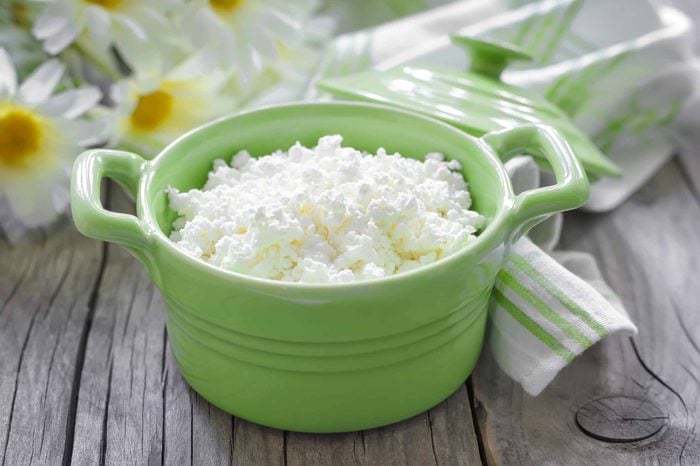
Cottage cheese
Cottage cheese with fruit is an old lunchtime favorite, packed with protein and calcium. But if you’re aiming to lower your sodium, you might want to skip these creamy curds, as they’re actually high in sodium. Even low-fat cottage cheese can have about 400 mg of sodium per half-cup. For a tasty substitute, try Greek yogurt, instead. You’ll get more protein, calcium, and as a bonus, some good-for-your-gut probiotics. Most plain Greek yogurts weigh in at around 70 mg of sodium per half-cup.
I Ate Cottage Cheese Every Day for a Week—Here’s What Happened
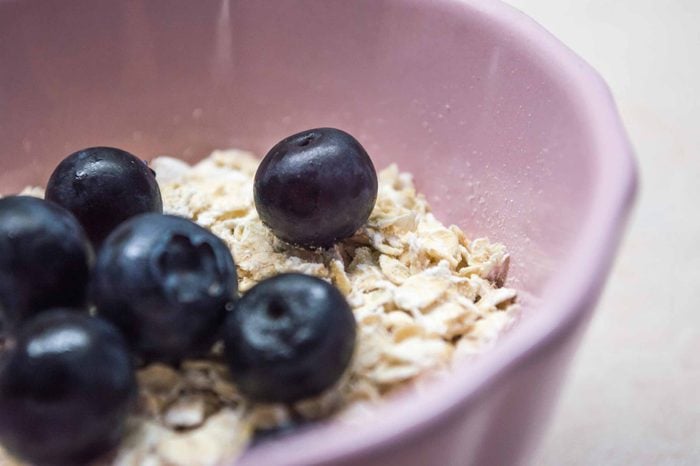
Instant oatmeal
Instant oatmeal is a popular option for the morning rush, especially in winter. Just add hot water and you have a warm and nutritious bowl of goodness, right? Not necessarily, says Paul Salter, RD, sports nutrition consultant in Flagstaff, Arizona, for Renaissance Periodization. “Spend an extra couple of minutes each morning with a serving of old-fashioned oats rather than relying on instant oatmeal,” Salter says. Instant oatmeal can have as much as 200 mg per serving compared to plain oats, which can contain 0 mg of sodium. If plain oatmeal sounds blah, try topping it with berries, Greek yogurt, and cinnamon.
14 High-Protein Breakfast Ideas That Will Help You Lose Weight
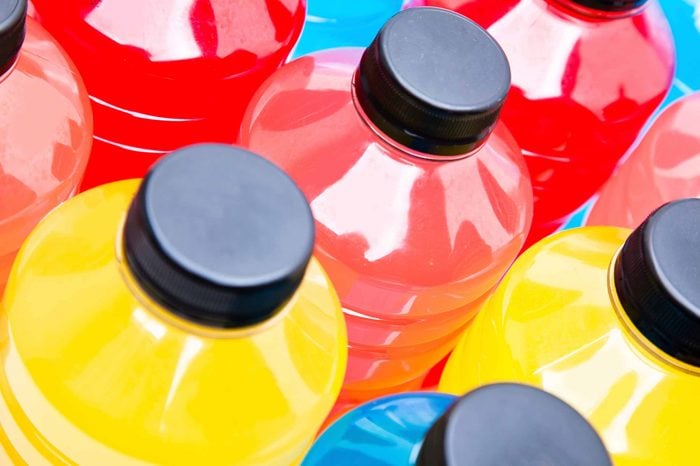
Sports drinks
Even after a heavy-duty sweat session at the gym, you probably don’t need a sports drink to replace your sodium stores. “Those beverages are created for athletes training at a high level for an extended period,” says Alysha Coughler, RD, a dietitian and personal trainer with Cardio-Go in Toronto, Canada. Water, coconut water, or maple water will quench your thirst and keep you within your daily sodium budget.
The 3 Best Hydrating Beverages That Aren’t Water, from a Certified Sports Dietitian
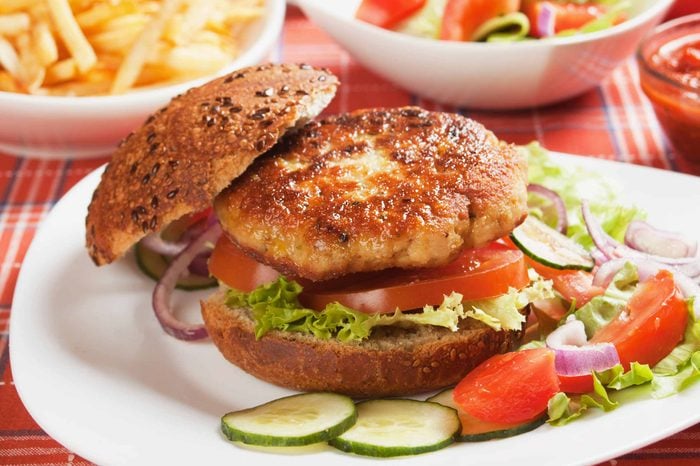
Veggie burgers
A vegetarian or vegan diet is known for being exceptionally healthy, so you may be shocked to learn that a veggie burger could be high in sodium. “Many meat substitutes are as high, or higher in salt than the regular stuff, to improve the flavor and texture,” Coughler says.
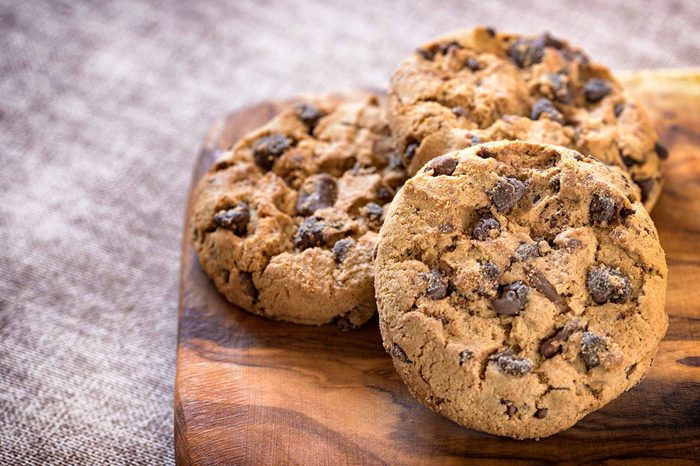
Cookies
When satisfying a sweet tooth, you’re probably more worried about sugar than salt. “But just because a product is sweet doesn’t mean it’s not high in sodium,” Coughler says. Besides the packaged baked goods we may toss in our shopping cart, Coughler cautions us to watch for sneaky high-sodium sources, such as “healthy” versions of cookies and brownies.
7 Surprisingly Decadent Recipes That Can Help Lower Cholesterol
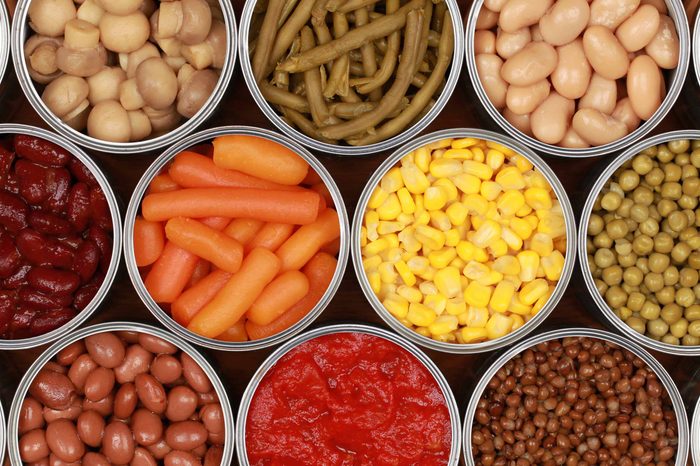
Canned veggies
When canned goods are on sale at your supermarket, it’s tempting to stock up on the veggies and beans, but that may not be the best strategy—they’re actually high in sodium. “Buying these items fresh or frozen without added salt is a better option,” says Ashvini Mashru, RD, of Wellness Nutrition Concepts in Malvern, PA. “But if you want to stick to cans, look for ‘no salt added’ or ‘reduced-sodium’ varieties.” If full-salt is your only option, drain and rinse the veggies or beans thoroughly with cold water before eating or cooking them. With a can of Del Monte’s Blue Lake Whole Green Beans, for example, draining and rinsing might save you 200 mg of sodium.
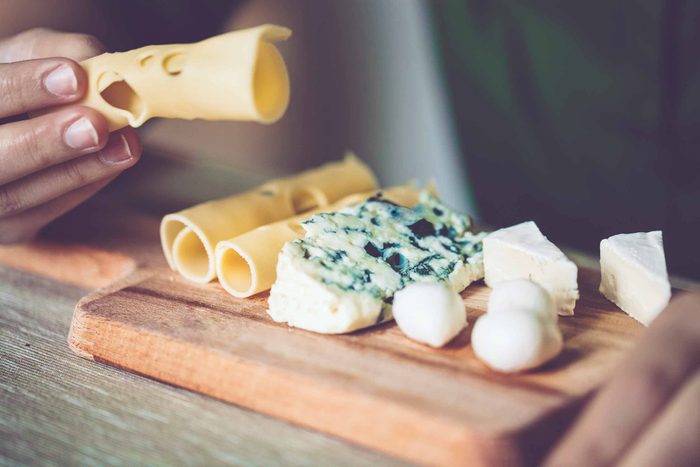
Cheese
We cube it, slice it, shred it, melt it, and sprinkle it on a variety of foods because, well, what’s not to love about cheese? Short answer: Salt, one of its basic ingredients. It keeps bacteria in check, controls moisture, acts as a preservative, and improves the texture and taste. Some varieties are saltier than others. For example, a 1-ounce serving of feta has about 320 mg of sodium, whereas blue cheese has about 325 mg per ounce, and pasteurized processed cheese has a whopping 420 mg per ounce. You can certainly opt for lower-sodium cheese (such as Swiss, goat, ricotta, and fresh mozzarella) or look for soft cheeses, which generally have lower sodium than hard cheeses. When you cook with cheese, spare the salt shaker, because cheese is a salty enough ingredient on its own.
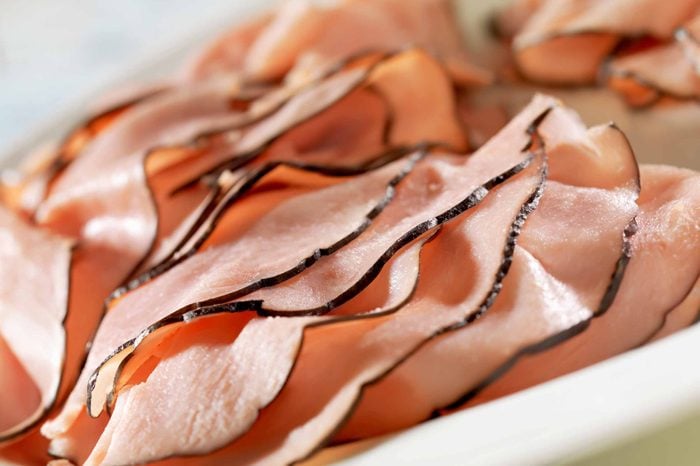
Deli meat
Deli meat may be a staple in the American sandwich, but it’s a veritable salt bomb. “Despite being a convenient source of protein, deli meat can rack up to 700 mg of sodium per serving,” Coughler says. Seek out lower-salt alternatives or, better yet, use leftover roasted chicken, canned tuna, or boiled eggs for your sandwich. You could also use less meat and make up the difference in veggies for a fiber-filling lunch that will see you through till dinner.
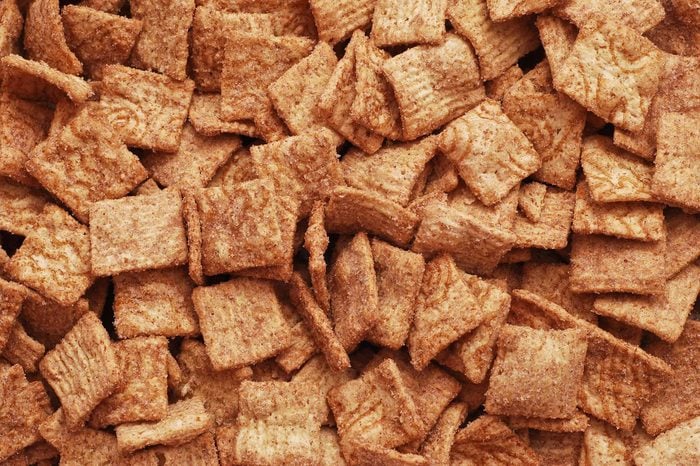
Cereal
Most fans of breakfast cereal know to be concerned about sugar content, especially if they have kids. “Little do we realize how much salt is lurking in seemingly healthy cereal options,” Coughler says. We’re often misled by terms like “natural,” “whole grains,” or “fiber-rich,” so we neglect to check the label for sodium. But Post Grape-Nuts, for example, has about 280 mg sodium per half-cup. A cup of General Mills Cinnamon Toast Crunch has 180 mg of sodium per 3/4 cup. The numbers seem small in relation to the 2,300 mg daily maximum suggested by the Centers for Disease Control and Prevention, but if you double or triple the serving size listed on the box, you could eat almost a quarter of your daily sodium allowance by 9 a.m.
Craving Sugar? A Dietitian Says You May Need More of This Surprising Nutrient
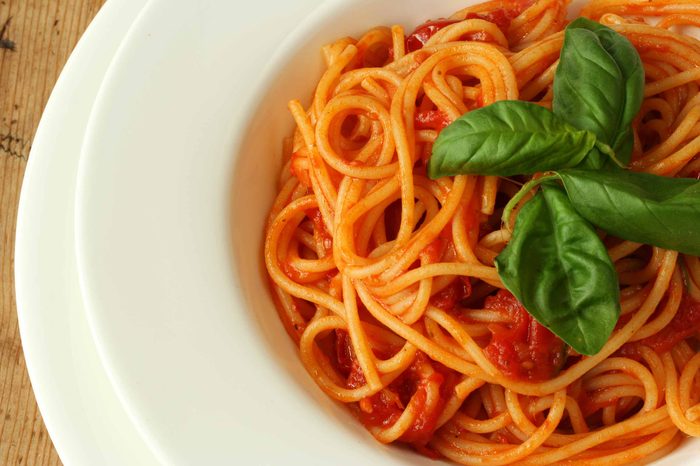
Pasta sauce
Typical pasta sauce ingredients—tomatoes, onions, peppers, garlic, and spices—seem pretty healthy, but most store-bought varieties can put a big dent in your sodium budget. Ragu Old World Style Traditional Sauce flavored with meat, for example, has 480 mg per half-cup. By the time you add another heaping scoop as a dip for your salty breadstick, you’re easily scarfing a high-sodium feast. Look for lower-sodium varieties or sprinkle in some Italian seasoning mix instead. (You won’t even miss the salt!)
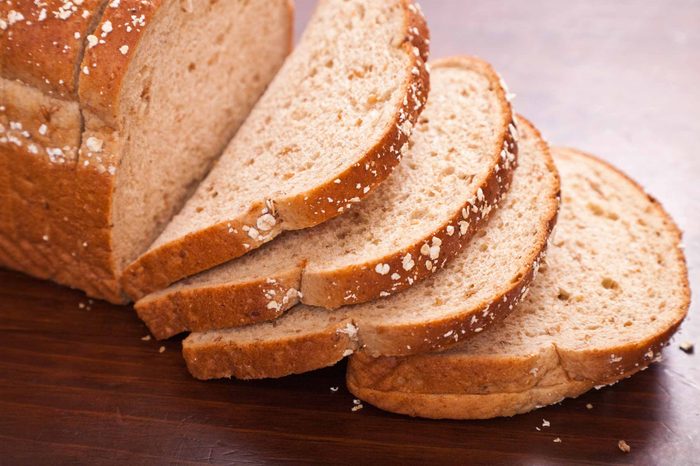
Bread
Yeast, flour, sugar, oil, and a bit of salt is what your grandmother’s homemade bread calls for, but when you go store-bought, you can double, triple, or even quadruple the salt. “Some breads have upwards of 325 mg of sodium per slice,” says Bobby Maknoon, RD, a registered dietitian in New York. Even if the numbers are lower on the nutrition label, be mindful of the serving size. “Most folks eat two slices of bread at a time, but manufacturers often list the serving size as one slice,” Maknoon says.
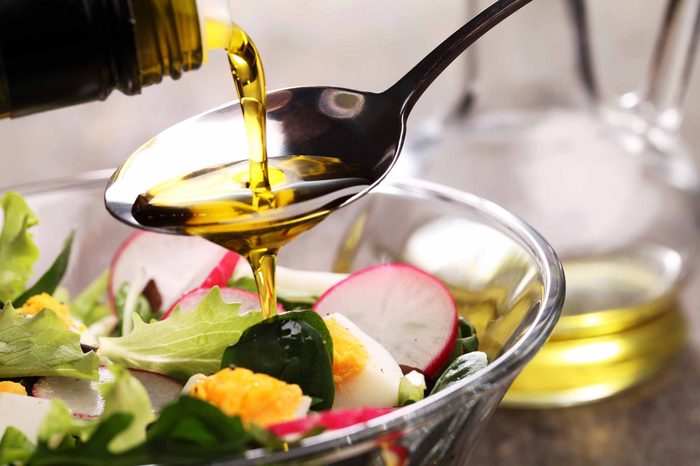
Salad dressing
Sugar and fat often get the blame for salad dressing’s bad reputation while salt sneaks by, but many dressings definitely qualify as foods that are high in sodium. “Some salad dressings have more than 200 mg of sodium per serving, which is usually just two tablespoons,” says Maknoon. Beware of “low-fat” and “light” varieties, as they usually have extra sodium to compensate for the lower-fat content. Since sodium is used to preserve the salad dressings we buy at the store, you can make your own lower-salt version at home: Maknoon suggests mixing a tablespoon each of olive oil, vinegar, or citrus juice; add your favorite fresh or dried herbs and finely chopped garlic or shallots.
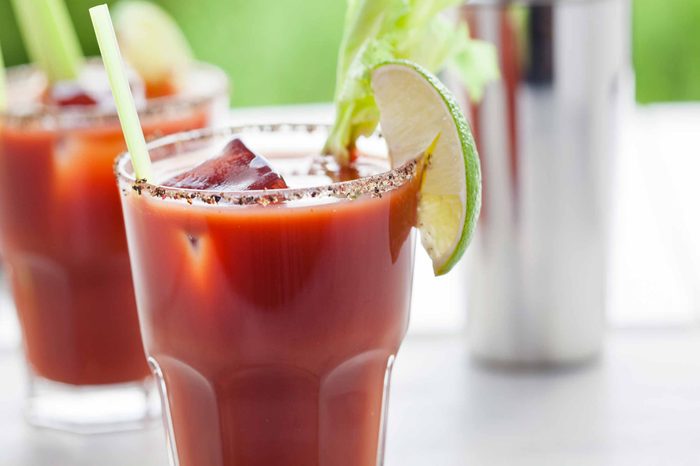
Cocktail mixes
Getting toasted shouldn’t be your only concern when whipping up a pitcher of Bloody Mary drinks for your next brunch. According to Ori Geshury, the director of education and co-founder of Aqua Vitae Institute, a bartending school in Philadelphia, one Bloody Mary cocktail can have 650 mg of sodium. You can make your own lower-sodium cocktails at home. We love these healthy recipes from Waterloo Sparkling Water!

